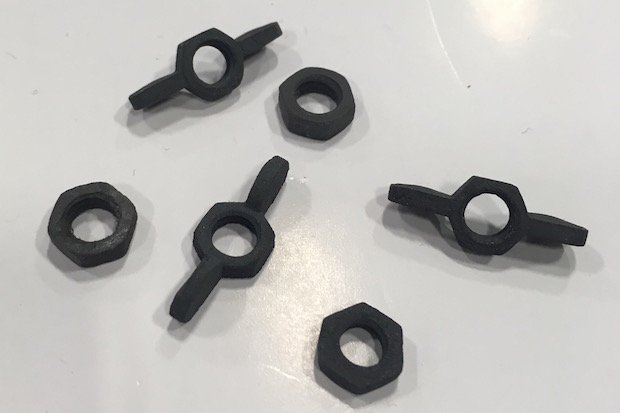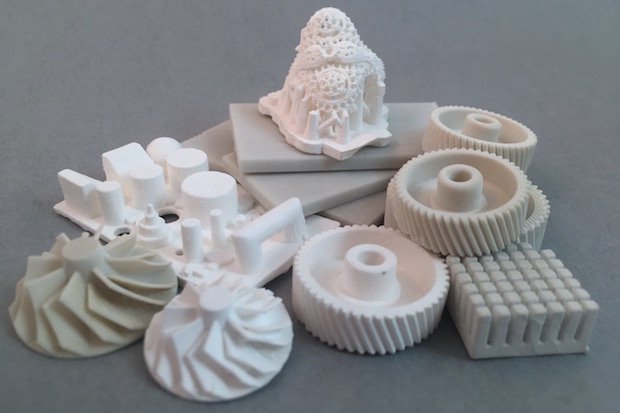
Tethon 3D’s metals- and ceramics-optimised Digital Light Processing (DLP) system is to launch the company’s 3D printing hardware division as it prepares to serve the industry with manufacturing solutions.
Revealed last month, the Nebraskan firm most renowned for its resin-based materials is to work in tandem with the state’s Department of Economic Development to fill a gap in the additive manufacturing (AM) market. Though its range of ceramic and metal resins are compatible with a fair few desktop DLP printers, there isn’t one on the market that has been specifically designed for these kind of materials. But there soon will be. It will represent a first for the industry, and while a Tethon 3D branded machine will be new to most people, the development of 3D printing hardware has been on the company’s agenda since the very beginning.
When operations at Tethon 3D commenced in 2014, it already held patents for ceramic binder jetting hardware, and still has a functional prototype machine based on this technology under wraps. Once a manufacturing partner is sourced, the company is to prepare for commercialisation of the binder jetting system.
It’s the first mention of the binder jetting technology since it filed a patent at the end of 2015, and has only come to the fore again since the company outlined its intentions around a DLP printer optimised for ceramics and metals. The company expects this DLP platform to have a significant impact in the AM space, so much its CEO, Karen Linder gives a nod to one of the most famed quotes re breaking down barriers when discussing the motivations behind the move.
“Continued momentum and progress in ceramic and metal additive manufacturing is currently limited by hardware performance. We have material customers in over 40 countries, so we know users recognise the value of the physical properties of ceramics and metals, but there isn’t a desktop DLP printer available that is designed specifically for use with these materials,” Linder tells TCT. “By launching a printer with improved features to accommodate ceramics and metals, we can perform end part manufacturing at a reasonable cost.
“To paraphrase John F. Kennedy, we choose to launch a ceramic and metal desktop DLP printer not because it is easy, but because it is hard.”

Tethon 3D
Parts printed in Tethon 3D’s Porcelite porcelain resin.
Such is the toughness of the task, Tethon is calling on the help of Bai Cui PhD and Prahalada Rao PhD from the University of Nebraska, who have expertise in ceramic materials for AM and 3D printing hardware respectively. Materials is, of course, a speciality of Tethon too. All the materials in its current product catalogue are hardware agnostic, and while that’s not about to change, the company can’t stress enough the importance of materials optimised for process.
“We will continue to offer Tethon 3D materials that are compatible with a variety of hardware platforms,” Greg Pugh, Director of Technical Operations, explained. “But by designing a printer optimised for ceramics and metals, it will allow Tethon to formulate its materials to be completely aligned with the printer settings of our own printer.”
The target is to deliver a solution capable of manufacturing accurate and functional end use parts in ceramics and metals. A desktop platform has been chosen for a number of practicality reasons, centring around the timeframe for production, costs, and what the market needs per its own identification. That said, after the launch of this initial product, the company will assess whether a large format machine would be desired, and even viable.
Tethon might have delivered to market a 3D printing system years ago, if it had had the financial support. The company itself was founded to commercialise intellectual property developed through a decade of research at Bowling Green State University’s Ceramic Arts Department. Its initial focus was in biomedical applications, but quickly shifted towards broader industrial needs. It was developing ceramic powders for the binder-jetting process, but upon realising the large market for DLP and SLA printers had a want for ceramic resins, decided to concentrate its efforts there instead. Porcelite was followed by other UV-curable ceramic resins, before the company came full circle with Tethonite, a powder material for binder-jetting printers.
The long-term strategy for the company sees three main revenue streams – materials, hardware, and the custom material development service. While revenue is a key component of any business, Tethon appreciates its output is just as important as its income.
“Launching our improved DLP printer will positively impact all three of these categories,” finished Trent Allen, Director of Business Development. “We will be able to formulate new materials that were previously impossible, as either Tethon 3D branded materials or for the exclusive use of our clients.
“The ultimate outcome is the opportunity for users to print objects that are currently impossible to fabricate. So, this is not simply a Tethon strategy. We consider this to be a strategy we share with the entire ceramics additive manufacturing industry.”
[“source=tctmagazine”]







